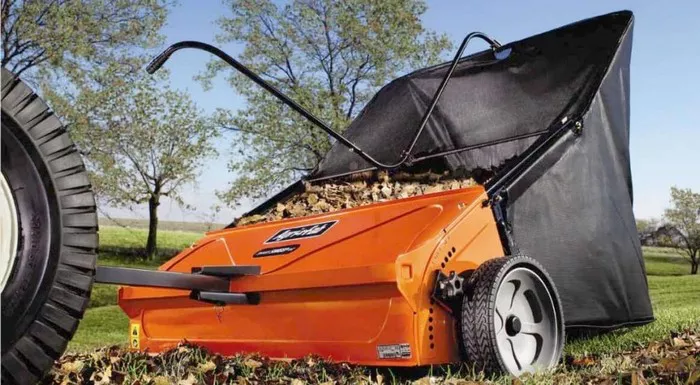Leaf blowers and lawn sweepers are two essential tools for maintaining outdoor spaces, particularly during the fall season when leaves clutter lawns and driveways. Their primary purpose is leaf removal and debris collection, but they differ in their mechanisms and operational methods.
Mechanism and Operation:
Leaf blowers work by emitting air at high velocity, effectively displacing leaves and small debris for convenient collection. They come in various designs, including handheld, backpack, and walk-behind models. Each design offers its own set of advantages and is suitable for different tasks. Additionally, some leaf blowers feature a vacuum mode, allowing users to mulch leaves and other debris, further enhancing their utility.
However, one significant drawback associated with leaf blowers is the noise they generate and their environmental impact. Many traditional gas-powered leaf blowers produce high levels of noise pollution and emit harmful pollutants, contributing to air and noise pollution in residential areas.
Lawn Sweeper Functionality:
Lawn sweepers, on the other hand, utilize rotating brushes to sweep leaves and debris directly from the surface, typically a lawn. They come in two main types: pushed and pulled (tow-behind) sweepers. The power source varies, with options including battery-powered, gasoline-powered, or manual labor, each affecting the usability and convenience of the device. Lawn sweepers collect leaves into a hopper for easy disposal, simplifying the cleanup process.
Comparison: Pros and Cons:
Advantages of Leaf Blowers:
1. Versatility: Leaf blowers are highly versatile and mobile, making them suitable for various tasks beyond just leaf removal. They can clear debris from driveways, walkways, and gutters, offering multi-purpose functionality.
2. Multi-purpose: In addition to blowing leaves, many leaf blowers feature a vacuum mode that allows for the collection and mulching of leaves, reducing the need for manual raking and bagging.
3. Suitable for Various Tasks: Leaf blowers are effective for tasks beyond just leaf removal, such as clearing grass clippings, small branches, and other debris from outdoor spaces.
Advantages of Lawn Sweepers:
1. Ideal for Lawn Tractors: If you own a lawn tractor, a lawn sweeper is a valuable addition to your equipment arsenal. It can easily be attached to the back of the tractor, allowing for efficient leaf collection while mowing the lawn.
2. Effective Clump Collection: Lawn sweepers excel at handling wet grass and clumps, making them ideal for areas with dense foliage or challenging terrain.
3. No Need to Carry: Unlike leaf blowers, which require the user to carry them during operation, lawn sweepers can be pushed or towed behind a vehicle, reducing fatigue and strain on the user.
Considerations for Decision-Making:
When deciding between a leaf blower and a lawn sweeper, several factors should be taken into account:
1. Property Size: Consider the size of your property and the amount of leaf and debris accumulation. Larger properties may benefit from the mobility and efficiency of a leaf blower.
2. Mobility: If you require mobility and flexibility when clearing leaves and debris from various areas, a leaf blower may be the better option.
3. Existing Equipment: If you already own a lawn tractor or other equipment, a lawn sweeper may complement your existing setup and offer added convenience during lawn maintenance tasks.
Price Range:
The price range for leaf blowers and lawn sweepers varies depending on factors such as brand, model, and features. Generally, leaf blowers range from $50 to $500 or more, depending on the power source and additional functionalities. Lawn sweepers typically range from $100 to $500, with tow-behind models being on the higher end of the price spectrum.
Conclusion
In conclusion, both leaf blowers and lawn sweepers serve essential roles in outdoor maintenance, offering distinct advantages and considerations for users. The decision between the two ultimately depends on individual preferences, property size, and specific needs. By understanding the differences and functionalities of each tool, users can make informed decisions to effectively manage leaf and debris removal in their outdoor spaces.

